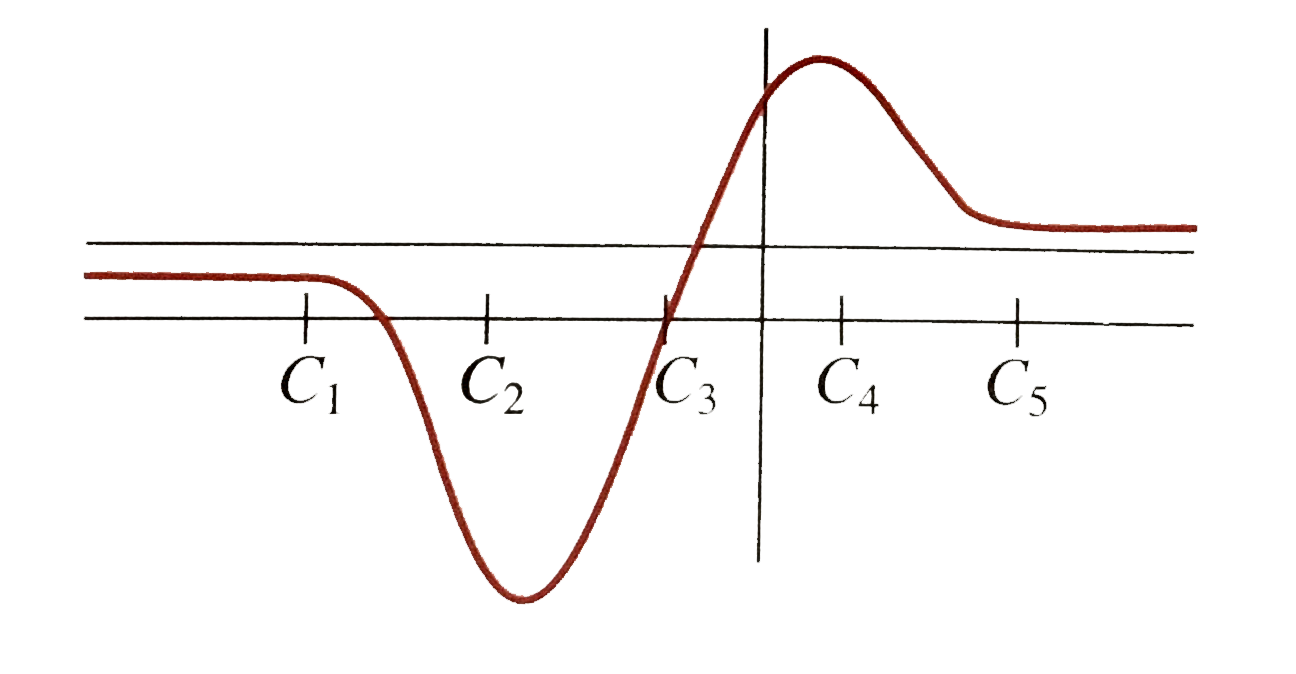If x=aCos3θandy=aSin3θthendydx=Solution in Tamil
(i) If the graph of y=f(x) is as given in the figure, it will not have any asymptote.

(ii) If the graph is as given in the figure, then it will have two asymptotes.

(iii) Since the range is a finite interval , the function must have at least one asymptote.

(iv) For the range to be an infinite interval, it should be non-bounded from at least one side.
So the maximum number of asymptotes is one.
Topper's Solved these Questions
- GRAPHS OF POLYNOMIAL AND RATIONAL FUNCTIONSBook:CENGAGEChapter:GRAPHS OF POLYNOMIAL AND RATIONAL FUNCTIONSExercise:Exercises
Explore 4 Videos
- GRAPHS OF POLYNOMIAL AND RATIONAL FUNCTIONSBook:CENGAGEChapter:GRAPHS OF POLYNOMIAL AND RATIONAL FUNCTIONSExercise:Exercises
Explore 4 Videos
- GRAPHICAL TRANSFORMATIONSBook:CENGAGEChapter:GRAPHICAL TRANSFORMATIONSExercise:Exercise
Explore 14 Videos
- GRAPHS OF ELEMENTARY FUNCTIONS Book:CENGAGEChapter:GRAPHS OF ELEMENTARY FUNCTIONS Exercise:Exercise
Explore 34 Videos
Similar Questions
Sketch the graph of an example of a rational function f that satisfies all the given conditions.
(i) f(0)=0,f(1),limx→∞f(x)=0,f is odd
(ii) limx→0+f(x)=∞,limx→0−f(x)=−∞,limx→∞f(x)=1,limx→−∞f(x)=1
(iii) limx→−2f(x)=∞,limx→−∞f(x)=3,limx→∞f(x)=3,f(0)=0
View SolutionSketch the graph of an example of a rational function f that satisfies all the given conditions.
(i) f(0)=0,f(1),limx→∞f(x)=0,f is odd
(ii) limx→0+f(x)=∞,limx→0−f(x)=−∞,limx→∞f(x)=1,limx→−∞f(x)=1
(iii) limx→−2f(x)=∞,limx→−∞f(x)=3,limx→∞f(x)=3,f(0)=0
View SolutionDraw the graph of y=tan−1x−cot−1x.
View SolutionDraw the graph of y=1(1/x).
View SolutionIf x=acos3t,y=asin3t,show that dydx=−(yx)13
View Solutionयदि (If) x=acos3θ,y=asin3θ, (find) dydx ज्ञात करें ।
View SolutionFind dydx if x=acos3t,y=asin3t.
View Solutiondydx নির্ণয় করো:x=acos3θ,y=asin3θ
View Solutionx=acos3θ,y=asinθ হলে dydx নির্ণয় করো
View SolutionIf x=acos3θ and y=asin3θ, then dydx=
View SolutionIf x=acos3θandy=asin3θ,then dydx=
View SolutionIf x=acos30 and y=asin3=0, prove that dydx=−3√yx.
View SolutionFind dydx if
x=acos3t , y=asin3t
View SolutionIf x=acos3tandy=asin3t, then dydx is equal to
View SolutionIf x=acos30 and y=asin3=0, prove that dydx=−3√yx.
View Solution